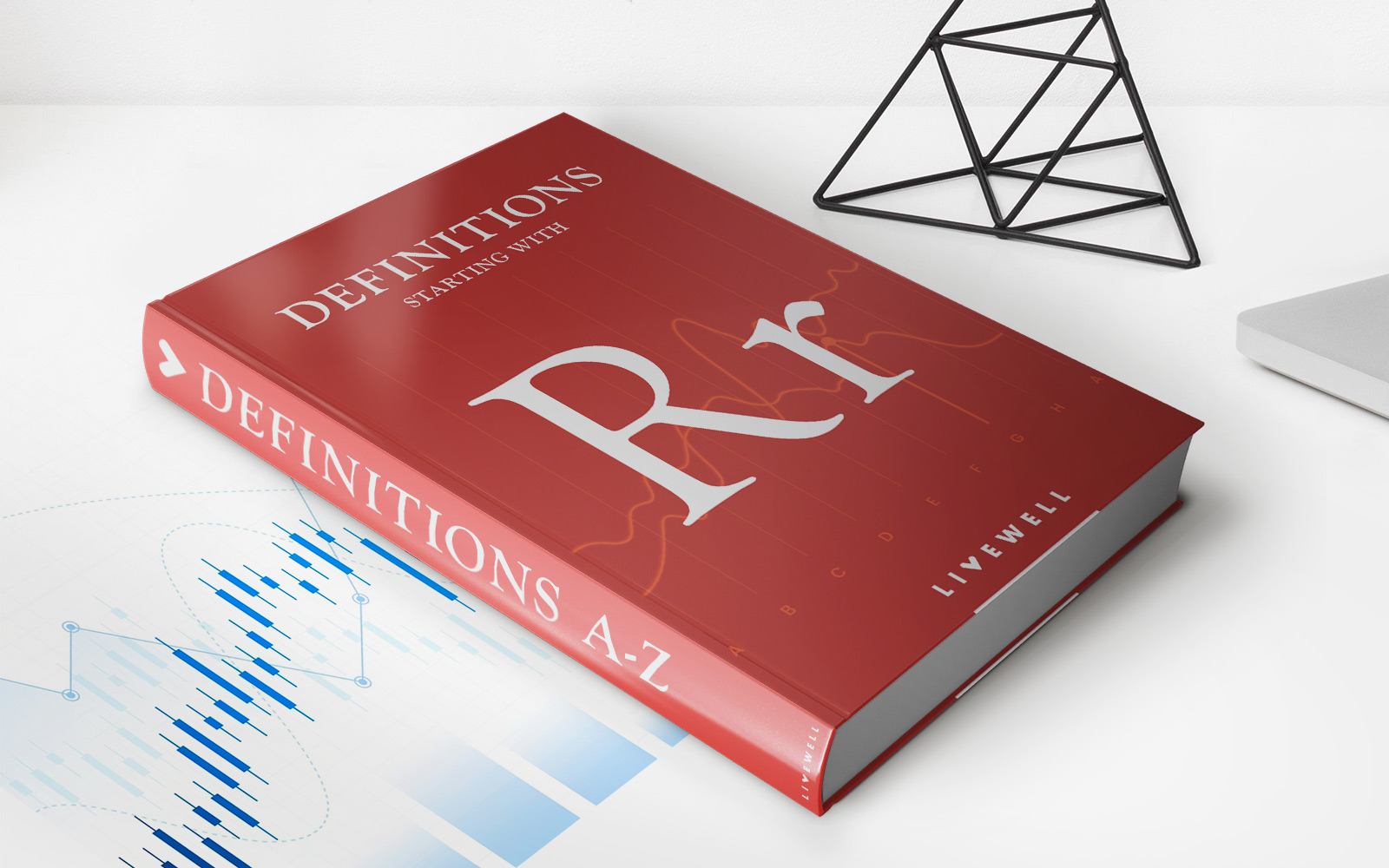

Finance
What Is Finance Charge In Credit Card
Modified: February 25, 2024
Discover what finance charges are and how they can impact your credit card. Learn how to manage and minimize finance charges to save money.
(Many of the links in this article redirect to a specific reviewed product. Your purchase of these products through affiliate links helps to generate commission for LiveWell, at no extra cost. Learn more)
Table of Contents
Introduction
When it comes to managing our finances, it’s important to understand the various terms and fees associated with credit cards. One such fee that cardholders should be aware of is the finance charge. The finance charge is an essential component of credit card usage, and understanding it can help you make informed decisions about your spending and debt management.
A finance charge is essentially the cost of borrowing on a credit card. It is the amount charged by the credit card issuer for the privilege of carrying a balance from one billing cycle to the next. This fee is calculated based on the outstanding balance, the annual percentage rate (APR), and the length of time the balance is carried.
The purpose of a finance charge is to compensate the credit card issuer for the risk they take by extending credit to cardholders. It helps cover the administrative costs, the cost of funding the credit, and the potential for loss if the balance is not paid off in full each month.
Definition of Finance Charge
A finance charge is a fee imposed by a credit card issuer for the privilege of carrying a balance on the card. It is essentially the cost of borrowing money on a credit card and is calculated based on the outstanding balance, the annual percentage rate (APR), and the length of time the balance is carried.
This fee is added to the cardholder’s account and is reflected in their monthly statement. It is important to note that finance charges only apply to cardholders who carry a balance from one billing cycle to the next. If the cardholder pays off their balance in full each month, they will not incur any finance charges.
The finance charge represents the cost of credit and serves as a way for credit card issuers to earn revenue. It helps cover the expenses incurred by the issuer in providing the credit, such as administrative costs, customer service, and the risk associated with lending money.
It’s essential for cardholders to understand how finance charges are calculated to make informed decisions about their credit card usage. By grasping the concept of finance charges and knowing how they are determined, cardholders can effectively manage their debt and minimize the overall cost of borrowing.
Components of Finance Charges
Finance charges on credit cards are comprised of several different components. Understanding these components can help cardholders better comprehend how the charges are calculated and make informed decisions about their credit card usage. The main components of finance charges include:
- Outstanding Balance: The outstanding balance is the amount of money that remains unpaid on the credit card after the payment due date. This balance is subject to finance charges.
- Annual Percentage Rate (APR): The annual percentage rate is the interest rate charged on the outstanding balance. The APR is expressed as a yearly rate, but it is typically calculated on a monthly basis for credit card billing cycles.
- Grace Period: The grace period is the period of time between the closing date of a billing cycle and the payment due date. During the grace period, cardholders can avoid finance charges by paying the entire outstanding balance in full.
- Method of Calculation: Credit card issuers can use different methods to calculate finance charges. The most common method is the average daily balance method, which calculates the average balance of the account over the billing cycle. Other methods include the previous balance method and the adjusted balance method.
- Additional Fees: In addition to interest charges, finance charges may also include other fees such as late payment fees, over-limit fees, or cash advance fees. These fees can further increase the overall cost of carrying a balance.
By understanding these components, cardholders can gain insights into how their finance charges are determined. This knowledge can empower them to make timely payments, pay off their balances in full during the grace period, and avoid unnecessary fees that increase the cost of borrowing on a credit card.
Calculation of Finance Charges
The calculation of finance charges on a credit card can vary depending on the credit card issuer and the terms and conditions of the specific card. However, the most common method used is the average daily balance method. Here is a general overview of how finance charges are calculated:
- Step 1: Determine the Daily Balance: At the end of each day in the billing cycle, the credit card issuer adds up the outstanding balance for that day.
- Step 2: Calculate the Average Daily Balance: The total of the daily balances is then divided by the number of days in the billing cycle to determine the average daily balance.
- Step 3: Multiply by the Daily Rate: The average daily balance is then multiplied by the daily interest rate. The daily interest rate is derived from the annual percentage rate (APR) divided by the number of days in the year.
- Step 4: Calculate the Monthly Finance Charge: Finally, the daily interest charges for each day in the billing cycle are summed up to determine the total finance charge for the month.
It’s important to note that finance charges are typically not applied if the cardholder pays off the entire outstanding balance by the payment due date during the grace period. The grace period can vary depending on the card issuer, but it is typically around 21 days.
In addition to the average daily balance method, some credit card issuers may use other calculation methods, such as the previous balance method or the adjusted balance method. It’s crucial to review the terms and conditions of your specific credit card to understand how finance charges are calculated.
By having an understanding of how finance charges are calculated, cardholders can better manage their credit card usage, make informed decisions about paying off their balances, and avoid unnecessary fees and charges.
Types of Finance Charges
When it comes to credit cards, there are various types of finance charges that cardholders may encounter. Understanding the different types of finance charges can help individuals make informed decisions about their credit card usage and minimize the overall cost of borrowing. Here are some common types of finance charges:
- Interest Charges: This is the most common type of finance charge and is determined by the annual percentage rate (APR) on the credit card. It is the cost of borrowing money and is calculated based on the outstanding balance and the length of time that balance is carried.
- Late Payment Fees: If a cardholder fails to make the minimum payment by the due date, the credit card issuer may charge a late payment fee. This fee is added to the outstanding balance and can contribute to the finance charges.
- Over-Limit Fees: If a cardholder exceeds their credit limit, the credit card issuer may charge an over-limit fee. This fee is added to the outstanding balance and can contribute to the overall finance charges.
- Cash Advance Fees: When a cardholder uses their credit card to withdraw cash from an ATM or make a cash advance transaction, the credit card issuer may charge a cash advance fee. This fee is typically a percentage of the cash advance amount and is added to the outstanding balance.
- Balance Transfer Fees: If a cardholder transfers a balance from one credit card to another, the credit card issuer may charge a balance transfer fee. This fee is typically a percentage of the amount being transferred and is added to the outstanding balance.
It’s important for cardholders to be aware of these different types of finance charges and take them into consideration when using their credit cards. By understanding the potential fees and charges associated with credit card usage, individuals can make responsible financial decisions, avoid unnecessary costs, and effectively manage their debt.
Importance of Understanding Finance Charges
Understanding finance charges on credit cards is crucial for cardholders to effectively manage their finances and make informed decisions about their borrowing habits. Here are some reasons why understanding finance charges is important:
- Cost of Borrowing: By understanding finance charges, cardholders can comprehend the true cost of borrowing money on their credit cards. This knowledge allows them to evaluate whether the benefits of making a purchase outweigh the potential finance charges incurred.
- Debt Management: Understanding finance charges helps cardholders manage their debt effectively. By knowing the interest rates and fees associated with their credit cards, individuals can develop strategies to pay off their balances more efficiently and avoid unnecessary finance charges.
- Comparison Shopping: When considering different credit card options, understanding finance charges allows individuals to compare the costs associated with each card. By evaluating the interest rates, fees, and other finance charges, cardholders can choose the credit card that offers the most favorable terms for their financial needs.
- Avoiding Unexpected Charges: Lack of awareness about finance charges can lead to unexpected costs for cardholders. By understanding the potential fees and charges associated with credit card usage, individuals can avoid unnecessary payments and effectively plan their finances.
- Financial Planning: Understanding finance charges is essential for effective financial planning. It allows individuals to factor in the costs of borrowing when creating budgets and setting financial goals, leading to more accurate and realistic plans for their financial future.
Overall, understanding finance charges empowers cardholders to make informed financial decisions, minimize costs, and effectively manage their credit card usage. By taking the time to educate themselves about finance charges, individuals can gain control over their finances and work towards achieving their long-term financial goals.
Ways to Minimize Finance Charges
Minimizing finance charges on credit cards is a key objective for cardholders looking to reduce the overall cost of borrowing. Here are some effective strategies to minimize finance charges:
- Pay Off Balances in Full: To avoid finance charges completely, cardholders should strive to pay off their credit card balances in full each month. By doing so, they can take advantage of the interest-free grace period offered by credit card issuers.
- Pay on Time: Avoiding late payments is crucial to reduce finance charges. Late payments can lead to penalty fees and increased interest rates, resulting in higher finance charges. Set up payment reminders or automate payments to ensure timely payments.
- Explore Low-Interest Credit Cards: Consider switching to a credit card with a lower interest rate or promotional interest rates. This can significantly reduce finance charges if carrying a balance is necessary. Compare different credit card options to find the most favorable rates.
- Avoid Cash Advances: Cash advances often come with higher interest rates and immediate finance charges. Avoid using credit cards for cash advances whenever possible to minimize these costly charges.
- Limit Balance Transfers: While balance transfers can consolidate debt and offer promotional interest rates, be cautious of balance transfer fees and any potential interest charges once the promotional period ends. Evaluate the overall cost and consider alternatives before proceeding.
- Negotiate with Your Credit Card Issuer: In some cases, it may be possible to negotiate a lower interest rate or waive certain fees with your credit card issuer. It’s worth reaching out to explore these options, especially if you have a good payment history.
- Monitor Spending and Budget Wisely: By tracking expenses and creating a budget, cardholders can better manage their credit card usage. This helps avoid unnecessary charges and enables timely payments, reducing the likelihood of incurring finance charges.
Implementing these strategies can help cardholders minimize finance charges and save money in the long run. By actively managing credit card usage, paying on time, and exploring options for lower interest rates, individuals can effectively reduce the costs associated with borrowing on their credit cards.
Conclusion
Understanding finance charges is essential for responsible credit card usage and effective financial management. By knowing how finance charges are calculated and the various components involved, cardholders can make informed decisions regarding their borrowing habits, debt repayment, and overall financial planning.
Finance charges represent the cost of borrowing money on a credit card and can include interest charges, late payment fees, over-limit fees, cash advance fees, and balance transfer fees. These charges can significantly impact the total cost of carrying a balance on a credit card and should be carefully considered when using credit cards for purchases and expenses.
To minimize finance charges, cardholders can adopt strategies such as paying off balances in full each month, making timely payments, exploring low-interest credit cards, avoiding cash advances, limiting balance transfers, negotiating with credit card issuers, and practicing responsible spending and budgeting.
By implementing these strategies and being aware of the potential fees and charges associated with credit card usage, individuals can reduce their finance charges, save money, and maintain a healthier financial position. It’s important to continuously review and evaluate credit card terms and conditions, as well as personal financial circumstances, to ensure effective debt management and overall financial well-being.
In conclusion, by understanding finance charges and proactively taking steps to minimize them, cardholders can make more informed financial decisions, reduce their cost of borrowing, and work towards achieving their long-term financial goals.














